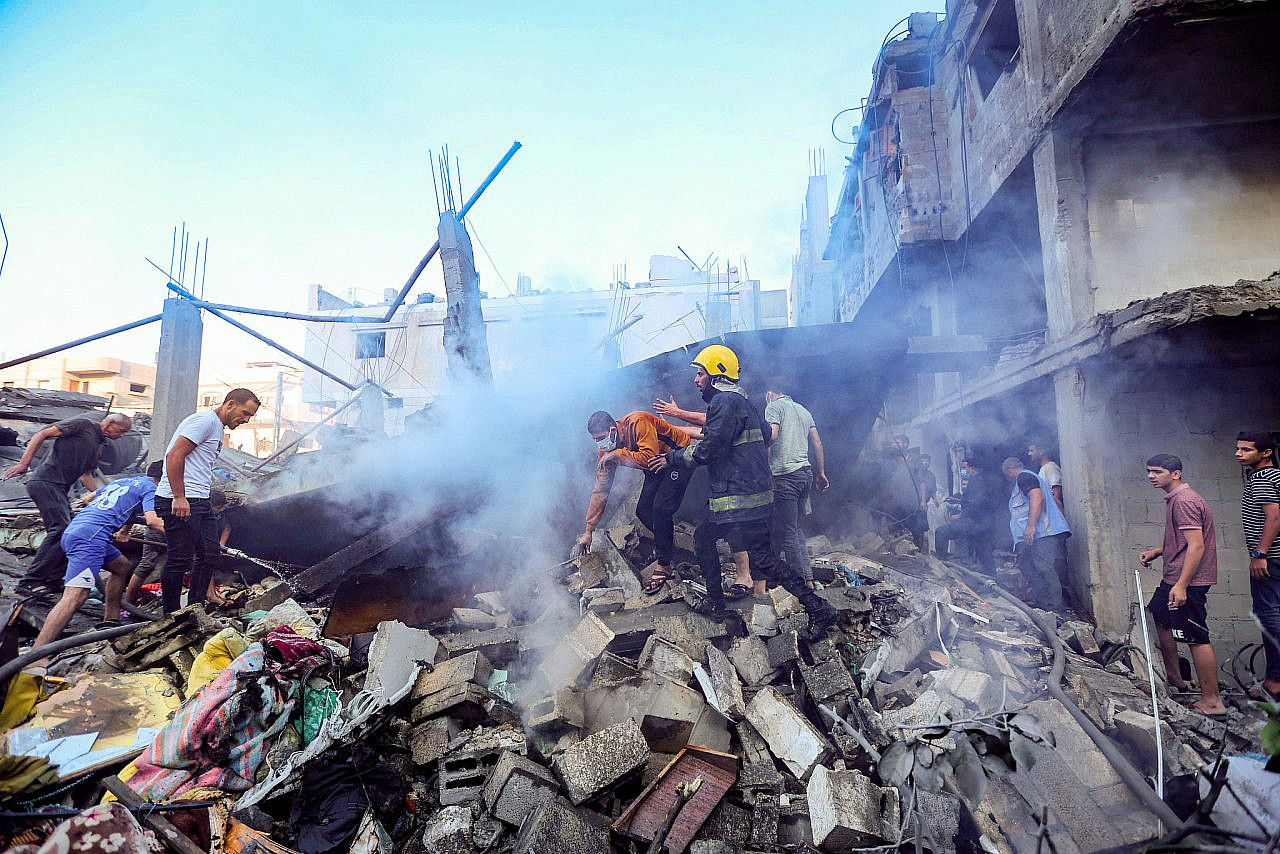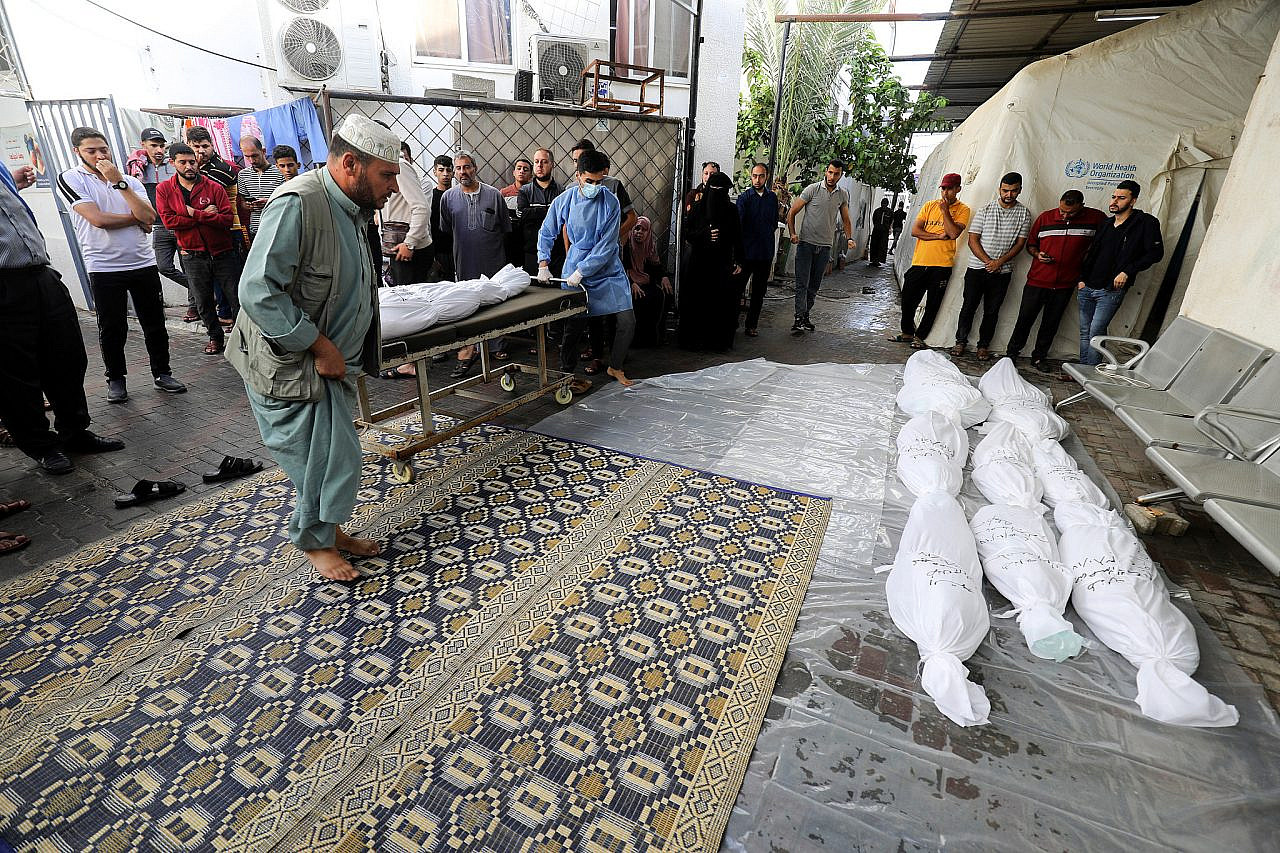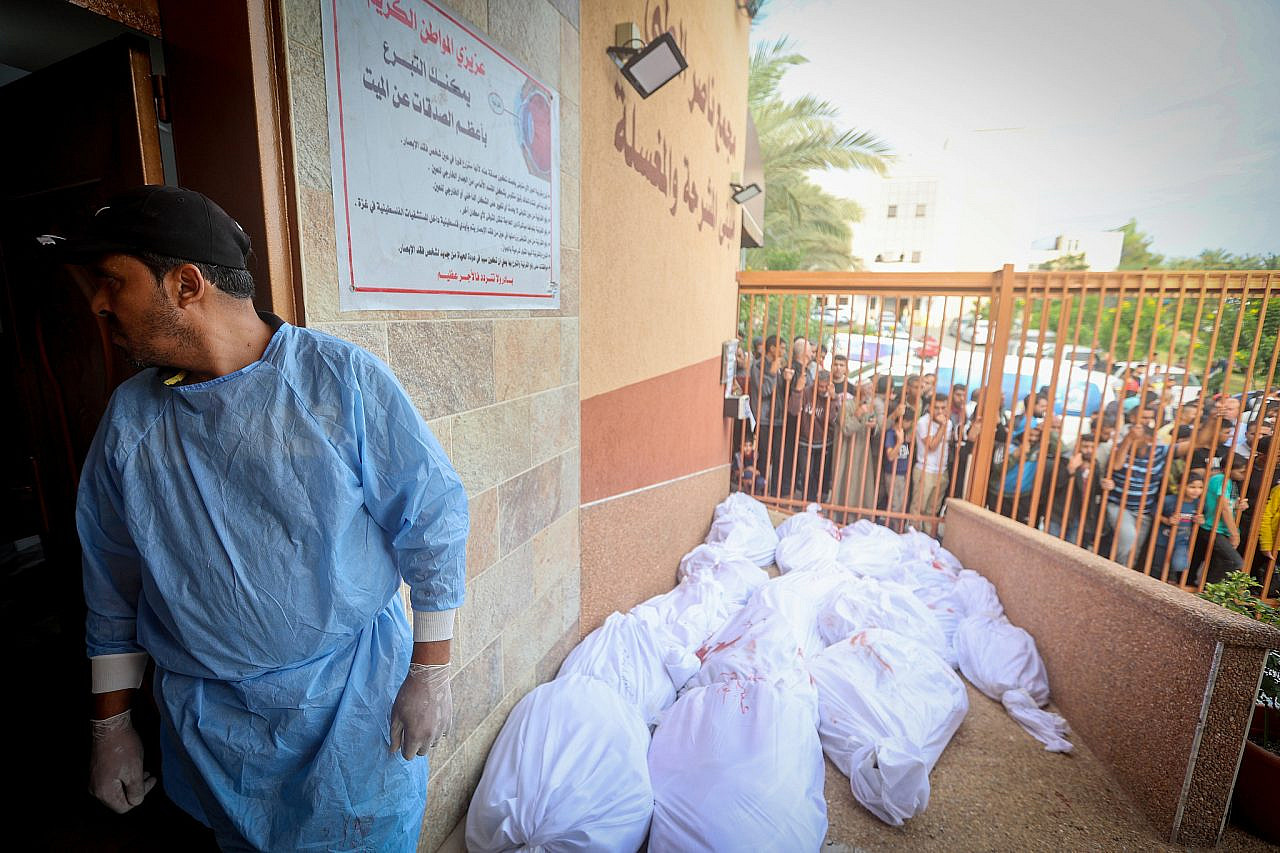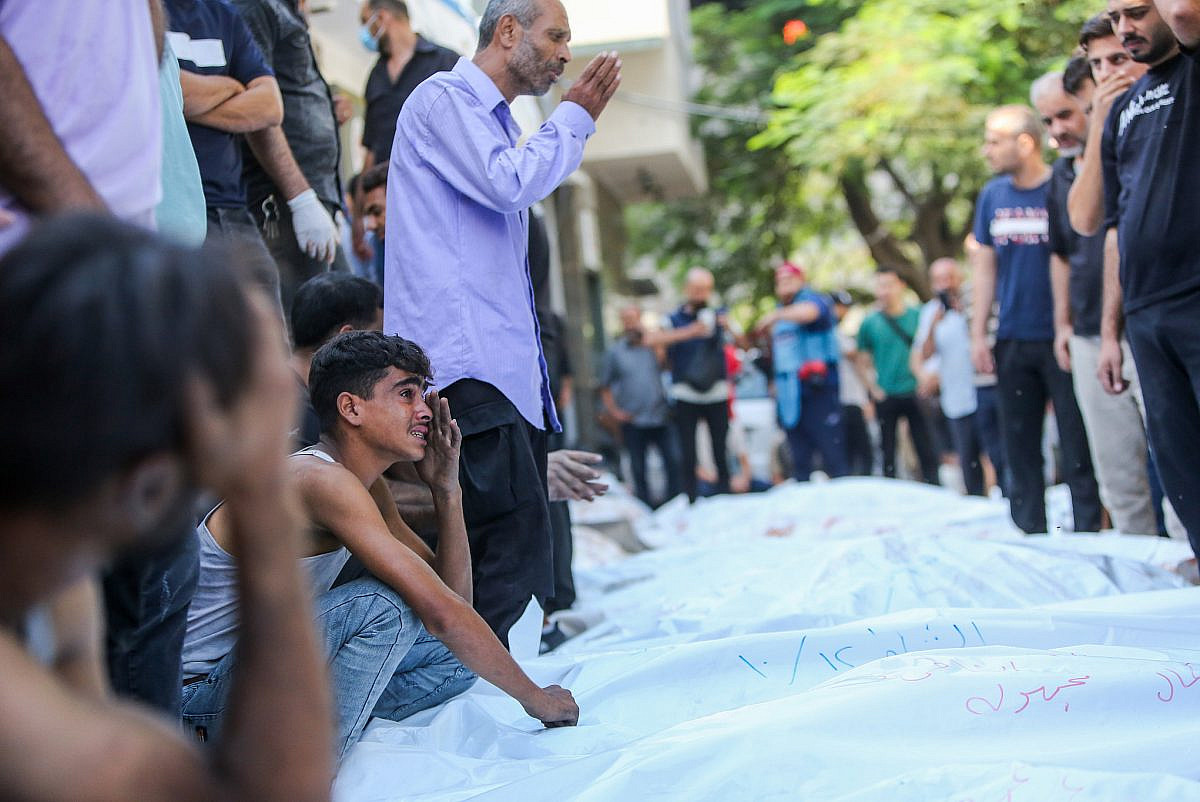The number of martyrs in Gaza from Israeli airstrikes is so high that people are being forced to bury their loved ones in mass graves that they dig with their hands. This is according to Hamed Hassan, a volunteer at Sheikh Radwan cemetery in Gaza City which, despite being full, is still having to accommodate more bodies.
Families are continuing to arrive at the cemetery to bury their loved ones because Israel’s airstrikes are preventing access to other cemeteries in the east of the city. With no space for new graves, however, they are simply stacking bodies on top of each other, hoping that once the war ends they will be able to give each of the martyrs a proper burial. And that is if they can access cemeteries at all — some are having to bury their family members in makeshift graves wherever they can.
On Oct. 12, an airstrike on the Jabaliya refugee camp in north Gaza City killed 44 members of the Shihab family, including many women and children. According to Muhammad Shihab, who survived the massacre, the remaining family members buried the martyrs in the exact spot of the attack after clearing the rubble, as they were unable to safely reach the cemetery in the east of the city.
The Lasheen family was also targeted by the occupation’s warplanes in Al-Bureij refugee camp in the central Gaza Strip. According to Shadi Lasheen, the camp’s cemetery could not accommodate the burial of all 16 martyrs separately, so the family was forced to bury them in only seven graves.

The Agha family owns a private cemetery just for family members in Khan Younis in the southern Gaza Strip. Due to the lack of space in public cemeteries, however, they allowed the Al-Najjar family to bury their martyrs in the cemetery until the end of this war, to be transferred later to a cemetery east of the city to join other Al-Najjar family graves.
No time for farewells
Across the Gaza Strip, medical facilities are struggling to deal with the quantity of bodies arriving in the aftermath of each additional airstrike. At hospitals, identifiable corpses are placed in white body bags with their names and the neighborhood or area in which they were killed written on. All body bags are placed on the sidewalk outside the General Administration of Forensic Medicine for official procedures to be conducted, before the corpses are presented to doctors for registration and the issuing of death certificates.
Given the surging death toll, however, the standard farewell procedures for martyrs are not possible. In most cases, a few family members attend funeral prayers for the deceased inside the hospital — rather than in a mosque, as is customary — before going directly to the nearest cemetery for burial.

Ali Jadallah, a prominent photojournalist with the Anadolu Agency, lost five members of his family after his father’s house in Shuja’iya, east Gaza City, was destroyed in an airstrike on Oct. 11. “My family’s house was targeted without any warning,” he said. “Everyone was martyred. I had to help the Civil Defense workers get my family out of the rubble.”
Jadallah explained that his hands were shaking when he was asked to complete the death registration procedures, before transporting his dead father’s body in his own car to be buried in a cemetery — which he describes as the longest journey of his life. “This is one of the most difficult things I have ever experienced,” he said. “I never expected that one day I would not conduct a burial ceremony for my father or be the only one to pray for him while he is in my car.”
With the help of a volunteer in the nearest cemetery, Jadallah dug a trench, laid concrete at its base, and then placed his father’s body on it and covered it with dirt. “My loss is great, and everything that happened afterwards is a pain that I will never be able to forget,” he said.
1,000 unidentified corpses
In Gaza’s hospitals, the morgue refrigerators are overflowing with the corpses of unidentified martyrs. These include those whose bodies have been dismembered as well as those who were displaced from their usual place of residence and their identities unknown. Some hospitals have been forced to use refrigerators from ice cream trucks to store more corpses, while others are simply placing bodies they don’t have space for in tents to keep them out of the sun.

Fearing an outbreak of disease, the Health Ministry called on the families of martyrs to complete the death registration procedures and remove the bodies from the hospitals, but this is not always possible. In what Health Ministry spokesperson Dr. Ashraf Al-Qudra described as a “painful scene,” Al-Shifa Hospital was forced to line up the bodies of the martyrs for a collective prayer before removing them for burial nearby.
What’s more, given the difficulties of keeping the refrigerators running amid Gaza’s ongoing electricity blackout and fuel shortage, the authorities decided on a new procedure for unidentified bodies. “Samples are being taken from the martyrs and given a serial number according to the time of their arrival at the hospital, the place of martyrdom, and the number of the hospital to which they arrived,” explained Dr. Hassan Hamada, director general of forensic medicine at the Justice Ministry. “When the war ends, the samples will be examined to see if there are relatives who reported missing people.”
Most read on +972
According to Hamada, the number of unidentified martyrs since the war began is around 1,000, including 500 children. The authorities decided that these bodies are to be buried in mass graves on a designated piece of land belonging to the Waqf (Islamic authorities) and registered with the Justice Ministry and Health Ministry.
But for many of those whose family members are missing, this procedure provides no solace. Riham Abu Saada, 14, went missing last week after an Israeli airstrike in Rafah, southern Gaza, and her father is desperate to find her. “I searched for her a lot and I am still searching, but I did not find her in places of refuge, hospitals, or mortuary refrigerators,” he said. “I demanded that the Health Ministry search for her among the unidentified martyrs, but I was asked to wait until the war has ended.”




